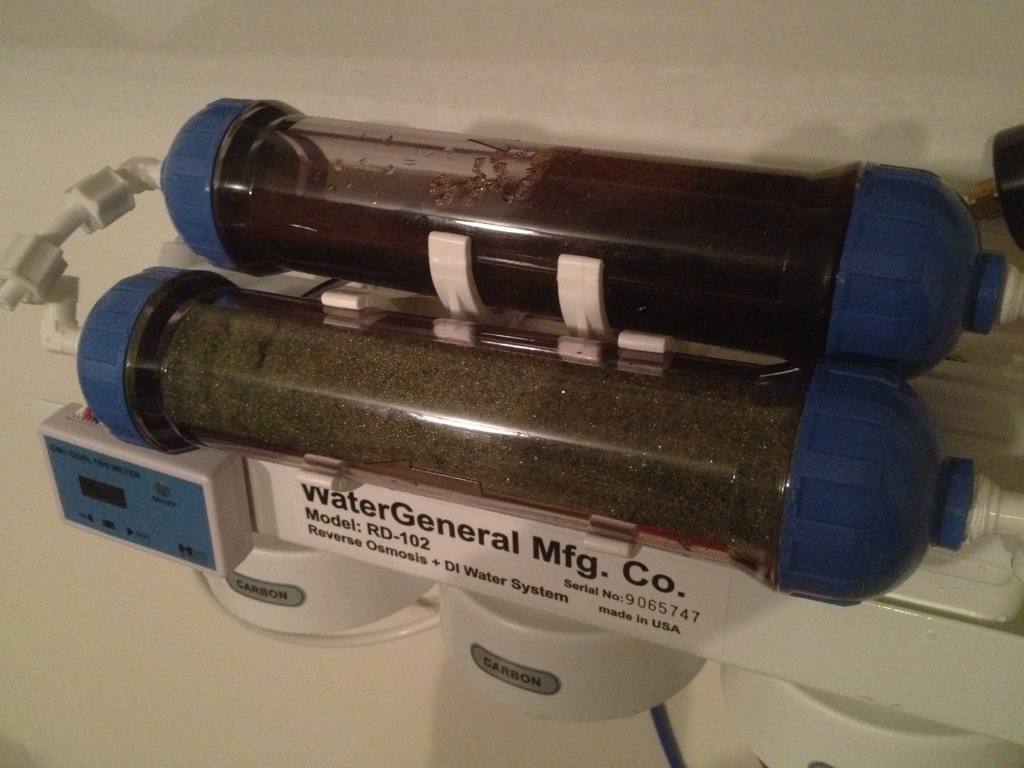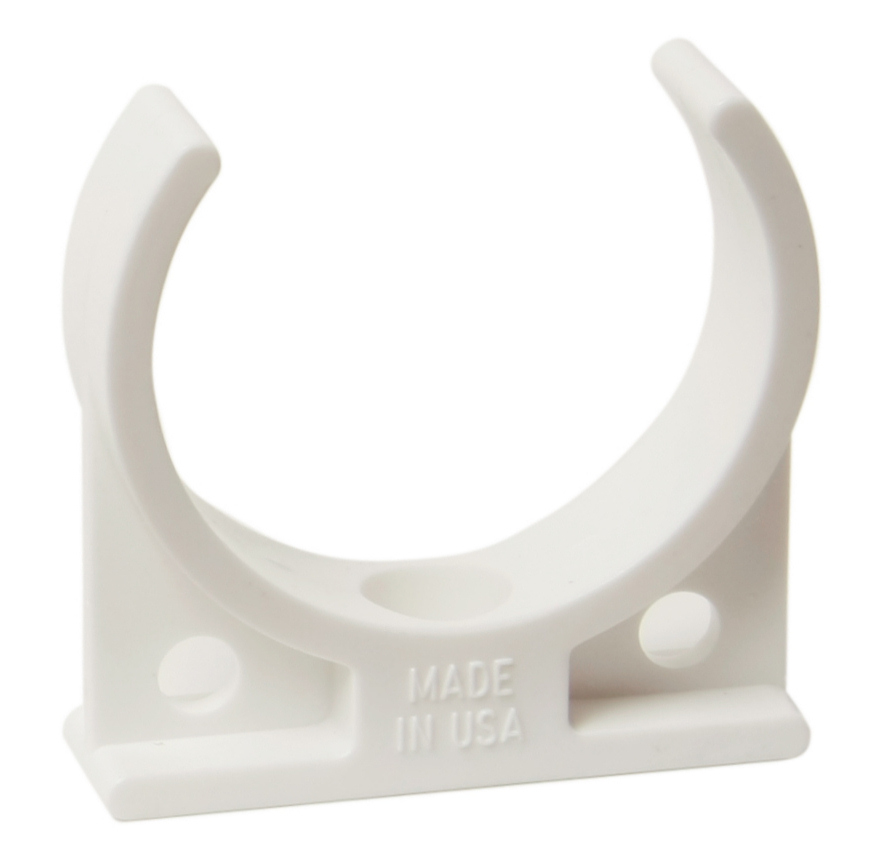A good rule of thumb is to replace your sediment filter and carbon block after six months. A more precise way to maximize the usable life of these two filters is to use a pressure gauge to identify when pressure reaching the membrane starts to decline. This is your indication one or both of the filters is beginning to clog.
Also be cognizant of the chlorine capacity of the carbon block. A good 0.5 micron carbon block for example will remove 99% of chlorine from 20,000 gallons of tap water presented at 1 gpm. Some original equipment suppliers commonly provide carbon cartridges rated at 2,000 to 6,000 gallons.
Regarding your RO membrane and DI resin, use your TDS meter to measure, record, and track the TDS (expressed in parts per million) in three places:
1. Tap water
2. After the RO but before the DI
3. After the DI.
The TDS in your tap water will likely range from about 50 ppm to upwards of 1000 parts per million (ppm). Common readings are 100 to 400 ppm. So for sake of discussion, let's say your tap water reads 400 ppm. That means that for every million parts of water, you have 400 parts of dissolved solids. How do we go about getting that TDS reading down to somewhere near zero?
If you do some experimenting with your TDS meter, you'll note that your sediment filter and carbon block filter (collectively called “prefilters”) do very little to remove dissolved solids. So with your tap water at 400 ppm, you can measure the water at the “in” port on your RO housing and you'll see it is still approximately 400 ppm.
The RO membrane is really the workhorse of the system. It removes most of the TDS, some membranes to a greater extent than others. For instance, 100 gpd Filmtec membranes have a rejection rate of 90% (i.e., they reject 90% of the dissolved solids in feed water). So the purified water coming from your 100 gpd membrane would be about 40 ppm (a 90% reduction). Filmtec 75 gpd (and below) membranes produce less purified water (aka “permeate”), but have a higher rejection rate (96 to 98%). The life span of a RO membrane is dependent upon how much water you run through it, and how dirty the water is. Membranes can function well for a year, two years, or more. To test the membrane, measure the total dissolved solids (TDS) in the water coming in to the membrane, and in the purified water (permeate) produced by the membrane. Compare that to the membrane’s advertised rejection rate, and to the same reading you recorded when the membrane was new. Membranes also commonly produce less water as their function declines.
After the RO membrane, water will flow to your DI housing. DI resin in good condition will reduce the 40 ppm water down to 0 or 1 ppm. When the DI output starts creeping up from 0 or 1 ppm, you know that your resin needs to be replaced. Sometimes people complain that their DI resin didn't last very long. Often the culprit is a malfunctioning RO membrane sending the DI resin “dirty” water. This will exhaust the resin quicker than would otherwise have been the case. Sometimes the problem is poor quality resin – remember that all resins are not created equal.
Russ


